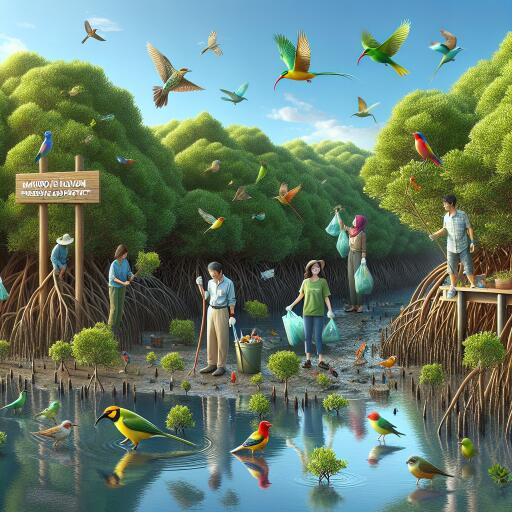
Preserving a Mangrove Haven
In the heart of Sarawak, where the Paloh, Rajang, and Belawai rivers converge, lies a mangrove oasis teeming with life and providing sustenance to its nearby inhabitants. This mangrove confluence, known for being Sarawak’s largest, flourishes with an array of biodiversity that includes an assortment of fish, the remarkable Irrawaddy dolphin, the elusive finless porpoise, and a variety of primates like the proboscis monkey and silver leaf monkey. Highlighting its ecological importance, this area also serves as a pivotal stopover for migratory birds seeking refuge and sustenance during their annual journey from the northern hemisphere.
The mangroves in the Rajang-Belawai-Paloh delta are not merely a collection of trees but a cornerstone for the local communities. These ecosystems provide essential services, from acting as vital nurseries and feeding grounds for a plethora of marine life that supports fisheries to offering natural protections against coastal erosion and climate change through their role as carbon sinks. Mangroves are celebrated for their resilience and natural regenerative properties, yet when faced with degradation and destruction, human intervention through replanting becomes imperative to ensure their survival and continual support for the ecosystems and communities they sustain.
A concerted effort involving WWF-Malaysia, the Sarawak government, and the communities themselves is currently underway to restore and conserve the mangrove forests in this region. Through partnerships with government agencies and the state Forest Department, local communities have taken the helm in rehabilitating areas of mangrove forests that have suffered degradation, ensuring these ecosystems can continue to provide for their livelihoods and protect their shores.
Led by community leaders like Penghulu Abu Seman Masri from Kampung Rajang and Maoh Bohom from Kampung Stalon, these restoration projects have garnered the support of local populations for their potential to safeguard against erosion, boost the economy, and preserve the rich biodiversity their way of life depends on. The impetus for these efforts stems not only from a desire to bolster current communities but to leave a thriving and sustainable environment for future generations.
The process of mangrove restoration, however, is fraught with challenges. From the physical demands of maneuvering through mud and potential wildlife encounters to the continuous maintenance required to protect young saplings from natural threats, the dedication of these communities to restoring their mangrove forests is a testament to their commitment to the environment and each other.
This undertaking mirrors the essence of “Land Restoration,” a theme celebrated on World Environment Day, drawing attention to the global efforts needed to protect our planet. Through the act of replanting native mangroves, the initiative in the Rajang-Belawai-Paloh delta stands as a beacon of hope, illustrating that with concerted effort and community engagement, we can mend the fabric of our ecosystems for a future where both nature and humanity prospers.
As we continue to witness these remarkable efforts in Sarawak, it becomes increasingly clear that the preservation of mangrove forests is not just an environmental imperative but a critical component in sustaining the livelihoods and traditions of local communities, ensuring a legacy of biodiversity and natural beauty for generations to come.





Leave a Reply